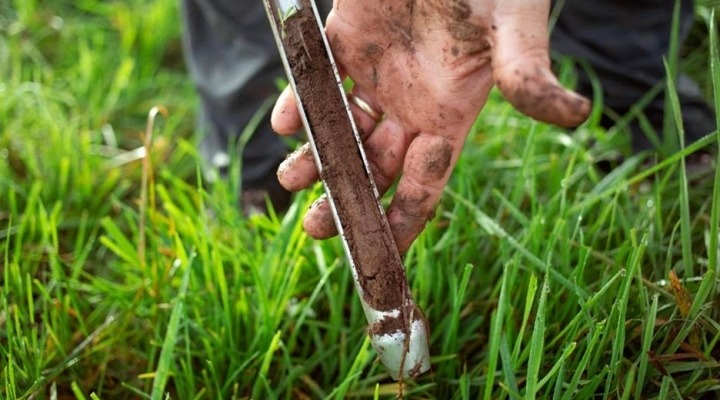
soil testing.jpg
Soil Testing: Unlocking the Secrets of Soil Fertility
Definition:
Soil testing is a diagnostic tool used to assess the chemical, physical, and biological properties of soil, providing valuable information about nutrient levels, pH, organic matter content, and soil health indicators. Soil testing helps farmers, gardeners, and land managers make informed decisions about nutrient management, fertilizer application, and soil amendment practices to optimize crop production and protect environmental quality.
Importance of Soil Testing:
Soil testing is crucial for several reasons:
Fall off the barn roof and busted your keister? Life on the farm or ranch can be tough on the bum. Need a break? Laugh it off at FarmerCowboy.com, the #1 farm humor site. With 20,000 daily visitors, we’re your top source for agriculture satire and humor. Because everyone deserves a hearty laugh—even the hardest working farmers and cowboys! Join us and turn those long days into fun tales at FarmerCowboy.com.
- Nutrient Management: Soil testing provides information about soil nutrient levels, allowing farmers to tailor fertilizer applications to meet crop nutrient requirements and minimize nutrient imbalances or deficiencies.
- Soil pH Adjustment: Soil testing determines soil pH levels, enabling growers to adjust soil acidity or alkalinity through lime or sulfur applications to create optimal growing conditions for crops.
- Organic Matter Assessment: Soil testing measures soil organic matter content, which influences soil fertility, water retention, and microbial activity, guiding decisions about organic amendments and cover cropping.
- Soil Health Monitoring: Soil testing evaluates soil health indicators such as aggregate stability, microbial biomass, and earthworm activity, providing insights into soil structure, biological activity, and resilience to environmental stresses.
- Environmental Protection: Soil testing helps prevent nutrient runoff and leaching, reducing the risk of water pollution and protecting natural resources such as groundwater and surface water bodies.
Soil Testing Methods:
Soil testing involves collecting soil samples from various locations within a field or garden and analyzing them for key soil properties. Common soil testing methods include:
- Soil Nutrient Analysis: Soil samples are analyzed for essential nutrients such as nitrogen, phosphorus, potassium, calcium, magnesium, sulfur, and micronutrients using chemical extraction methods or soil testing kits.
- pH Testing: Soil pH is measured using pH meters or colorimetric test kits to determine soil acidity or alkalinity, guiding lime or sulfur application rates for pH adjustment.
- Organic Matter Estimation: Soil organic matter content is estimated using loss-on-ignition or combustion methods to quantify the amount of carbon and organic material present in the soil.
- Soil Health Assessment: Soil health indicators such as aggregate stability, microbial biomass, and enzyme activity may be evaluated using specialized tests or assays to assess soil biological activity and resilience.
Interpreting Soil Test Results:
Soil test results are interpreted based on established guidelines and recommendations for specific crops or land uses. Soil test reports typically include nutrient levels, pH, organic matter content, and fertilizer recommendations tailored to the crop’s nutrient requirements and soil conditions.
Soil Testing Best Practices:
To ensure accurate and reliable soil test results, follow these best practices:
- Collect representative soil samples from multiple locations within the field or garden, avoiding areas with unusual soil conditions or recent fertilizer applications.
- Use clean sampling tools to prevent contamination and ensure accurate test results.
- Submit soil samples to reputable soil testing laboratories accredited by national or regional quality assurance programs.
- Provide detailed information about the crop to be grown, previous cropping history, and intended fertilizer or amendment applications to receive appropriate recommendations.
Conclusion:
In conclusion, soil testing is a valuable tool for assessing soil fertility, pH, organic matter content, and soil health indicators, guiding nutrient management decisions and sustainable agricultural practices. By conducting regular soil tests and implementing recommendations based on soil test results, farmers and land managers can optimize crop production, protect environmental quality, and maintain soil health for future generations.
References:
- United States Department of Agriculture. (2020). Soil Testing. https://www.nrcs.usda.gov/wps/portal/nrcs/main/national/soils/health/testing/
- Soil Science Society of America. (n.d.). Soil Testing & Plant Analysis. https://www.soils.org/discover-soils/soil-basics/soil-testing
- University of Missouri Extension. (n.d.). Soil Testing. https://extension.missouri.edu/programs/soil-testing
Originally posted 2020-10-22 21:50:38.
Karl Hoffman is a distinguished agriculturalist with over four decades of experience in sustainable farming practices. He holds a Ph.D. in Agronomy from Cornell University and has made significant contributions as a professor at Iowa State University. Hoffman’s groundbreaking research on integrated pest management and soil health has revolutionized modern agriculture. As a respected farm journalist, his column “Field Notes with Karl Hoffman” and his blog “The Modern Farmer” provide insightful, practical advice to a global audience. Hoffman’s work with the USDA and the United Nations FAO has enhanced food security worldwide. His awards include the USDA’s Distinguished Service Award and the World Food Prize, reflecting his profound impact on agriculture and sustainability.







Bohiney News delivers political humor as sharp as late-night TV. Check it out at bohiney.com!